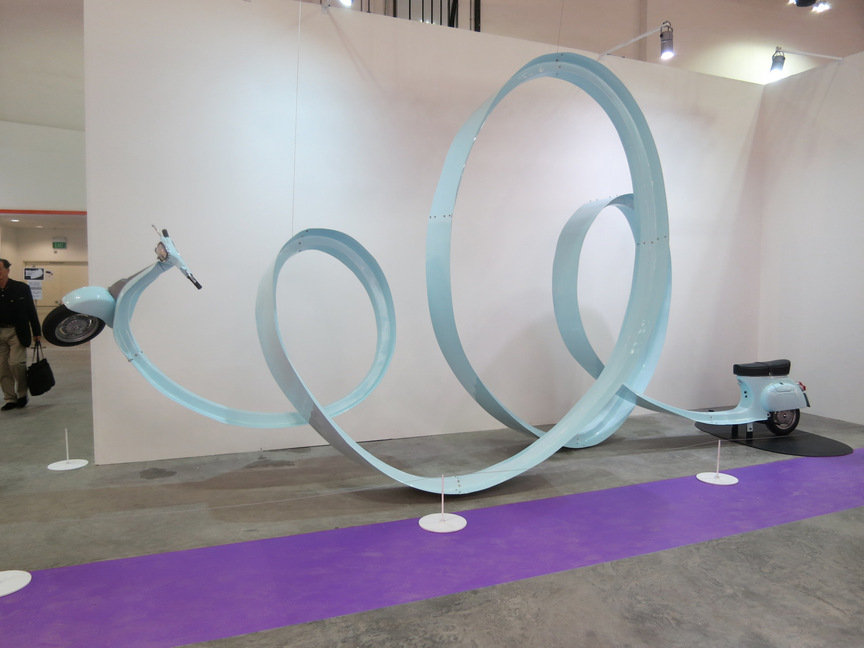
R
E
V N
E
X
T
However, it was the new Indonesian pavilion—claimed as the largest international showcase of Indonesian art at a single fair to date, and featuring some 40 artists and collectives, along with daily performance pieces—that pried collector’s wallets open, much to the chagrin of gallerists, as ASS both represented and sold the works. Little wonder that the fair’s director Lorenzo Rudolf called Indonesia “the strongest country with the strongest art scene.” Buyers listened, scooping up works by Indonesian artists such as Yunizar, Handiwirman Saputra and Yuli Prayitno for five- and six-digit price tags. Even before the fair opened to the public, a painting by Indonesian artist I. Nyoman Masriadi went for USD 350,000.
Preopening sales also included paintings by Hiroshi Senju (USD 415,000) and two video animations by South Korean Lee Lee-Nam (at USD 38,000 each). Scattered throughout the venue were numerous works by Yayoi Kusama ranging from USD 50,000 to 350,000, considered a “safe investment” by Southeast Asian collectors. Buyers also huddled around a million-dollar Anish Kapoor sculpture, which eventually sold for USD 793,000, and perused two half-million-dollar Nam June Paik works. Other top-selling Asian artists included Ai Weiwei and Zeng Fanzhi.
Gallerists attending their second or third ASS agreed that the new layout and design of the Marina Bay Sands venue greatly improved the order and logistics of the fair. It was also observed by one gallery director that, relative to buyers at other international art markets, ASS investors are more direct about talking prices and more willing to make straightforward purchasing decisions. This no-nonsense style contributed to a high demand for Asian contemporary art in the last quarter of 2012, according to ASS. As Southeast Asia’s emerging artists come of age in one of the world’s most lucrative—and burstable—art markets, we might wonder (and fear) how much sway the market will hold over their artistic sensibilities.
Marybeth Stock is a writer, researcher and editor based in Singapore and Japan.



